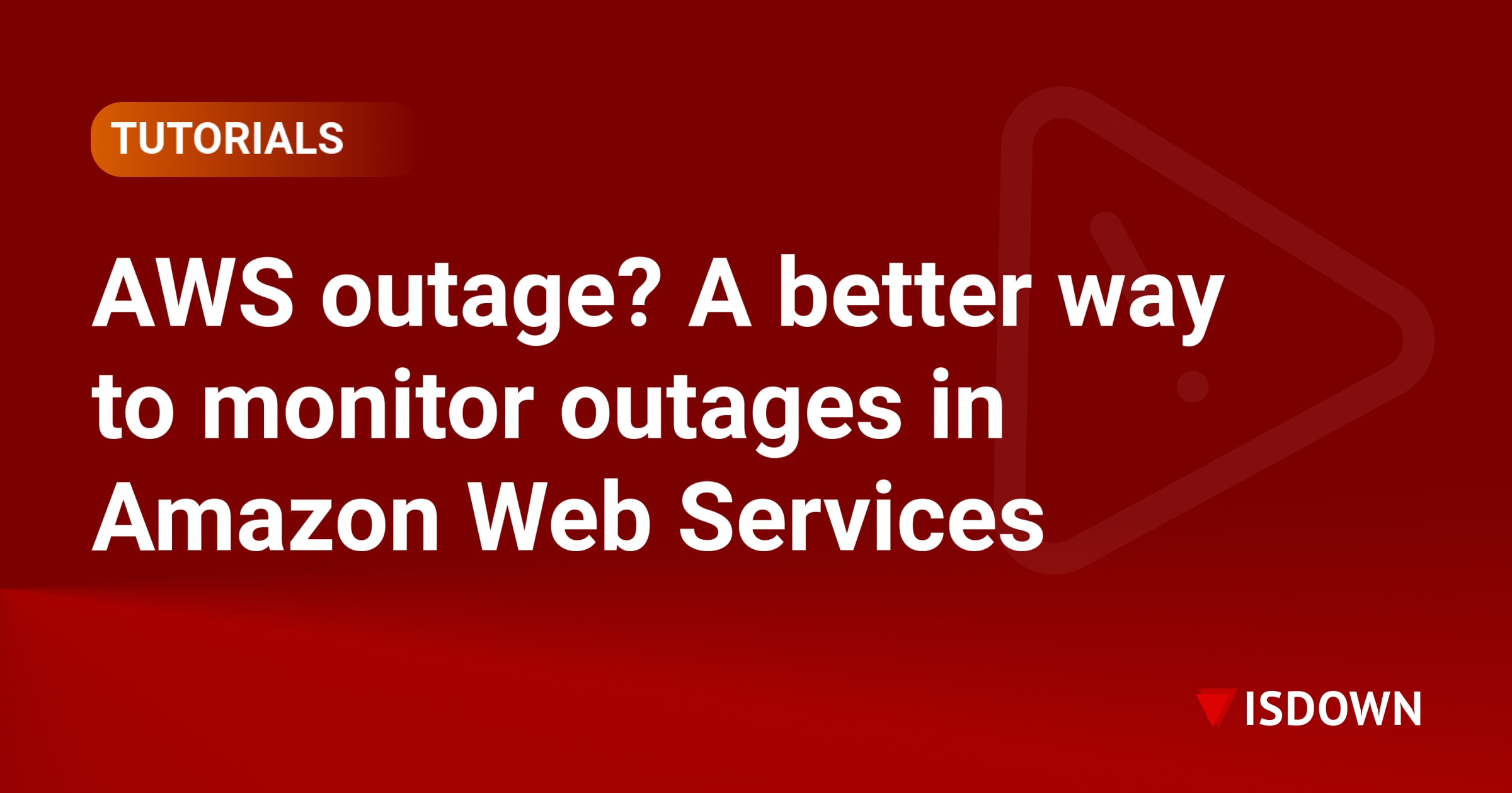The 15 Best DevOps Monitoring Tools for Lightning-Fast Incident Response
When incidents strike, every second counts. The difference between a minor hiccup and a major outage often comes down to how quickly your team detects and responds to issues. That's why choosing the best DevOps monitoring tools for incident response can make or break your operational excellence.
Modern DevOps teams need more than just basic uptime checks. They require comprehensive monitoring solutions that provide deep visibility into infrastructure, applications, and third-party dependencies while enabling rapid incident detection and response. This guide explores 15 powerful tools that help teams achieve lightning-fast incident response times.
1. Datadog
Datadog stands out as a comprehensive observability platform that unifies metrics, traces, and logs in a single interface. Its real-time dashboards and intelligent alerting capabilities help teams spot anomalies before they escalate into incidents.
Key features:
- Full-stack visibility across cloud infrastructure and applications
- Machine learning-powered anomaly detection
- Automated correlation between metrics, traces, and logs
- Over 600 integrations with popular DevOps tools
2. New Relic
New Relic's all-in-one observability platform excels at application performance monitoring while providing infrastructure insights. Its AI-powered incident intelligence reduces alert noise and surfaces the most critical issues.
Key features:
- Application performance monitoring (APM) with code-level visibility
- Distributed tracing for microservices architectures
- Custom dashboards and flexible querying language
- Proactive anomaly detection with applied intelligence
3. Prometheus + Grafana
This open-source duo has become the de facto standard for Kubernetes monitoring. Prometheus handles metrics collection and storage, while Grafana provides stunning visualizations and alerting capabilities.
Key features:
- Native Kubernetes integration
- Powerful query language (PromQL)
- Highly customizable dashboards
- Cost-effective for teams with technical expertise
4. PagerDuty
While primarily known as an incident management platform, PagerDuty's monitoring capabilities through Event Intelligence help teams reduce noise and accelerate response times. It integrates seamlessly with other monitoring tools to centralize alerts.
Key features:
- Intelligent alert grouping and suppression
- On-call scheduling and escalation policies
- Mobile incident response capabilities
- Integration with 700+ monitoring and collaboration tools
5. Splunk
Splunk transforms machine data into operational intelligence, making it invaluable for security and compliance-focused teams. Its powerful search capabilities help teams quickly investigate incidents across massive datasets.
Key features:
- Real-time log analysis and correlation
- Advanced threat detection capabilities
- Custom alerts based on complex queries
- Scalable architecture for enterprise environments
6. Elastic Stack (ELK)
The Elastic Stack combines Elasticsearch, Logstash, and Kibana to deliver powerful log management and analysis. It's particularly effective for teams that need flexible, scalable monitoring solutions without vendor lock-in.
Key features:
- Centralized logging from multiple sources
- Real-time search and analytics
- Machine learning capabilities for anomaly detection
- Open-source with commercial support options
7. AppDynamics
AppDynamics provides deep application insights with automatic discovery and mapping of application topology. Its business transaction monitoring helps teams understand the real impact of performance issues.
Key features:
- Automatic application discovery and dependency mapping
- Code-level diagnostics for root cause analysis
- Business performance monitoring
- End-user experience monitoring
8. Dynatrace
Dynatrace's AI-powered platform automatically discovers and monitors your entire technology stack. Its Davis AI engine provides precise root cause analysis, significantly reducing mean time to resolution.
Key features:
- Automatic and intelligent observability
- Full-stack monitoring with zero configuration
- AI-powered root cause analysis
- Cloud-native architecture support
9. Nagios
A veteran in the monitoring space, Nagios remains popular for infrastructure monitoring, especially in traditional data center environments. Its extensive plugin ecosystem allows monitoring virtually any system or service.
Key features:
- Comprehensive infrastructure monitoring
- Thousands of community plugins
- Flexible alerting and escalation
- Cost-effective for on-premises deployments
10. Zabbix
Zabbix offers enterprise-class monitoring without enterprise-class pricing. It excels at network and server monitoring while providing modern features like predictive analytics and automated remediation.
Key features:
- Agentless monitoring capabilities
- Predictive problem detection
- Automated discovery and configuration
- Native high availability
11. IsDown
For teams heavily dependent on third-party services, IsDown provides specialized monitoring of external vendor status pages. It aggregates status information from hundreds of services and delivers real-time alerts when vendors experience issues, helping teams stay ahead of service disruptions.
Key features:
- Monitors 4400+ third-party services
- Real-time status aggregation
- Multi-channel alerting (Slack, Teams, Datadog, Pagerduty, and more)
- Integration with incident management platforms
12. Sentry
Sentry specializes in application error monitoring and performance tracking. It provides detailed error reports with full stack traces, making it invaluable for debugging production issues quickly.
Key features:
- Real-time error tracking
- Performance monitoring for web applications
- Release tracking and regression detection
- User impact analysis
13. Better Stack (formerly Better Uptime)
Better Stack combines uptime monitoring, log management, and incident management in one platform. Its modern interface and developer-friendly approach make it popular among smaller DevOps teams.
Key features:
- Multi-location uptime monitoring
- Integrated log management
- On-call scheduling and alerting
- Status pages for incident communication
14. Honeycomb
Honeycomb pioneered the concept of observability-driven development with its unique approach to exploring system behavior. Its query engine allows teams to ask arbitrary questions about their systems without pre-defining metrics.
Key features:
- High-cardinality data analysis
- Interactive query builder
- Service level objectives (SLO) tracking
- Distributed tracing with BubbleUp anomaly detection
15. Site24x7
Site24x7 provides all-in-one monitoring for websites, servers, applications, and cloud services. Its comprehensive feature set and affordable pricing make it attractive for small to medium-sized teams.
Key features:
- Website and API monitoring
- Server and application monitoring
- Real user monitoring (RUM)
- Integrated status page creation
Choosing the Right Monitoring Solutions for Your Team
Selecting the best DevOps monitoring tools for incident response depends on several factors:
Team size and expertise: Open-source solutions like Prometheus require more technical expertise but offer greater flexibility. Commercial platforms provide easier setup and support.
Infrastructure complexity: Cloud-native environments benefit from tools like Datadog or Dynatrace, while traditional infrastructures might prefer Nagios or Zabbix.
Budget constraints: Consider total cost of ownership, including licensing, infrastructure, and personnel costs. Open-source tools may have lower licensing costs but higher operational overhead.
Integration requirements: Ensure your chosen tools integrate with existing incident management workflows. Many teams combine multiple monitoring solutions with centralized alerting tools for comprehensive coverage.
Third-party dependencies: If your stack relies heavily on external services, complement your infrastructure monitoring with tools that track vendor status to reduce risks from vendor dependencies.
Building Your Monitoring Stack
The most effective incident response strategies often involve combining multiple monitoring solutions:
- Infrastructure monitoring: Use tools like Datadog, Prometheus, or Nagios for server and network monitoring
- Application monitoring: Implement APM solutions like New Relic or AppDynamics
- Log management: Deploy Elastic Stack or Splunk for centralized logging
- Error tracking: Add Sentry for application error monitoring
- External service monitoring: Use IsDown or similar tools to track third-party dependencies
- Incident management: Centralize alerts through PagerDuty or similar platforms
This layered approach ensures comprehensive coverage while enabling rapid incident detection and response across your entire technology stack.
Frequently Asked Questions
What are the most important features to look for in DevOps monitoring tools for incident response?
The most critical features include real-time alerting, intelligent alert grouping to reduce noise, integration capabilities with your existing tools, and comprehensive dashboards for quick issue identification. Additionally, look for tools that offer automated root cause analysis and support for your specific technology stack.
How many monitoring tools should a DevOps team typically use?
Most effective DevOps teams use 3-5 specialized monitoring tools that cover different aspects of their infrastructure and applications. This typically includes an infrastructure monitoring tool, an APM solution, a log management platform, and an incident management system. The key is ensuring these tools integrate well together.
What's the difference between monitoring tools and observability tools?
Monitoring tools track predefined metrics and alert when thresholds are exceeded, while observability tools allow you to explore and understand system behavior through high-cardinality data. Observability tools like Honeycomb let you ask questions you didn't anticipate, while traditional monitoring tools focus on known issues and metrics.
How can teams reduce alert fatigue when using multiple monitoring solutions?
Implement intelligent alert routing and deduplication through a centralized incident management platform. Set up proper alert thresholds, use anomaly detection instead of static thresholds where possible, and regularly review and tune your alerts. Many teams also implement alert suppression during known maintenance windows.
Should we build our own monitoring tools or use commercial solutions?
Unless you have very specific requirements that existing tools can't meet, it's generally better to use established monitoring solutions. Building and maintaining custom monitoring tools requires significant resources and often results in inferior capabilities compared to mature commercial or open-source alternatives.
What are the best practices for implementing new monitoring tools?
Start with a pilot project on non-critical systems, define clear success metrics before implementation, ensure proper team training, and gradually expand coverage. Document your monitoring strategy, establish clear alerting rules, and regularly review the effectiveness of your monitoring tools to ensure they continue meeting your incident response needs.
 Nuno Tomas
Founder of IsDown
Nuno Tomas
Founder of IsDown
The Status Page Aggregator with Early Outage Detection
Unified vendor dashboard
Early Outage Detection
Stop the Support Flood
Related articles
Never again lose time looking in the wrong place
14-day free trial · No credit card required · No code required




